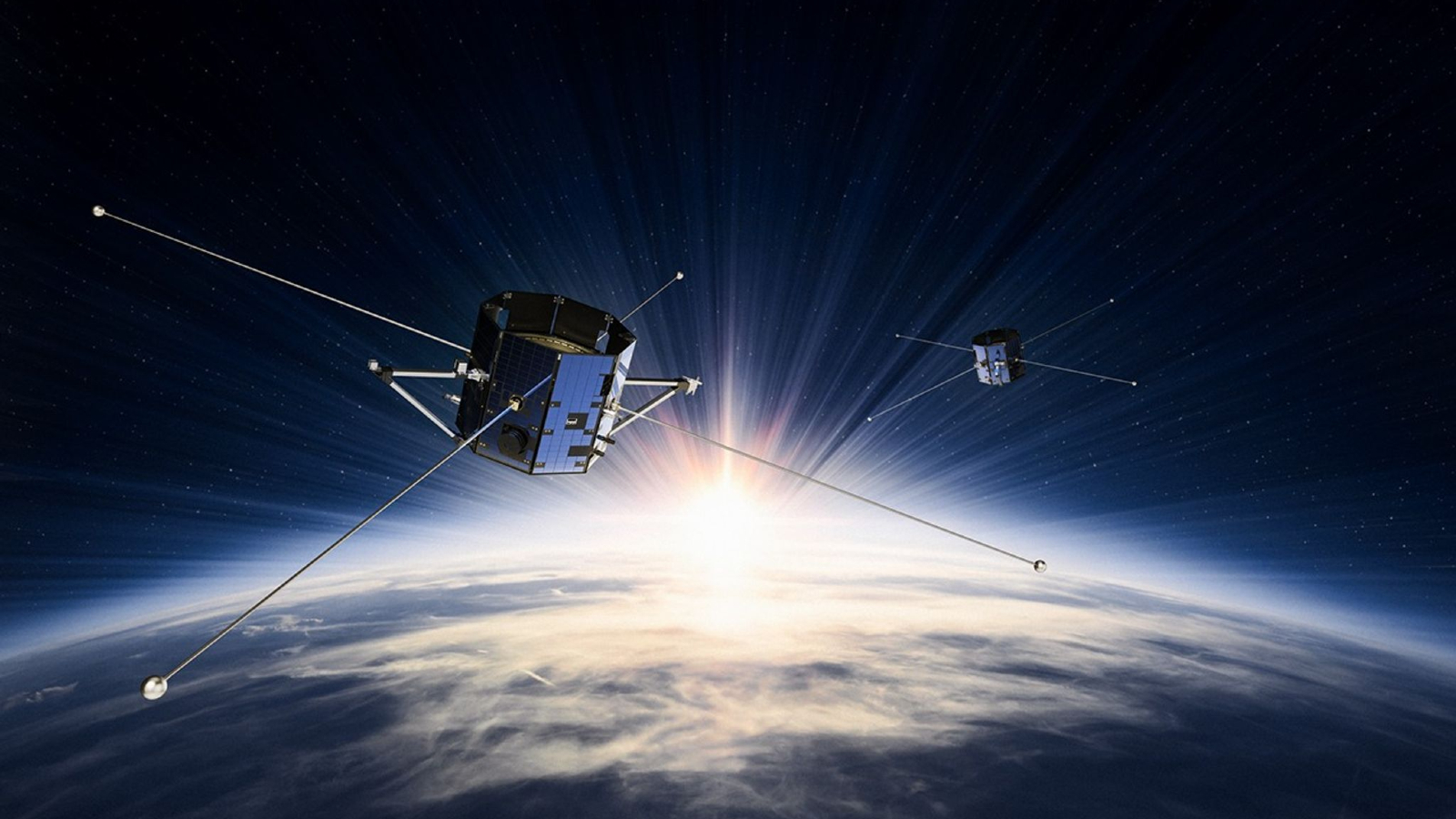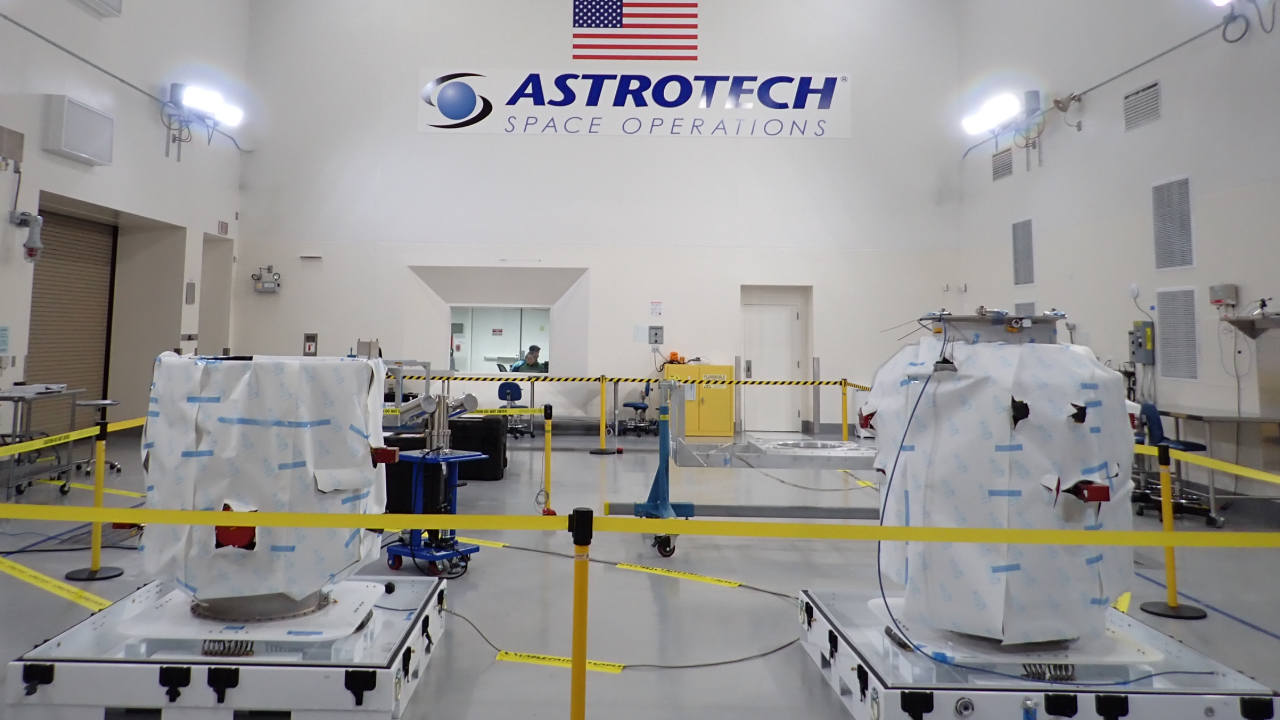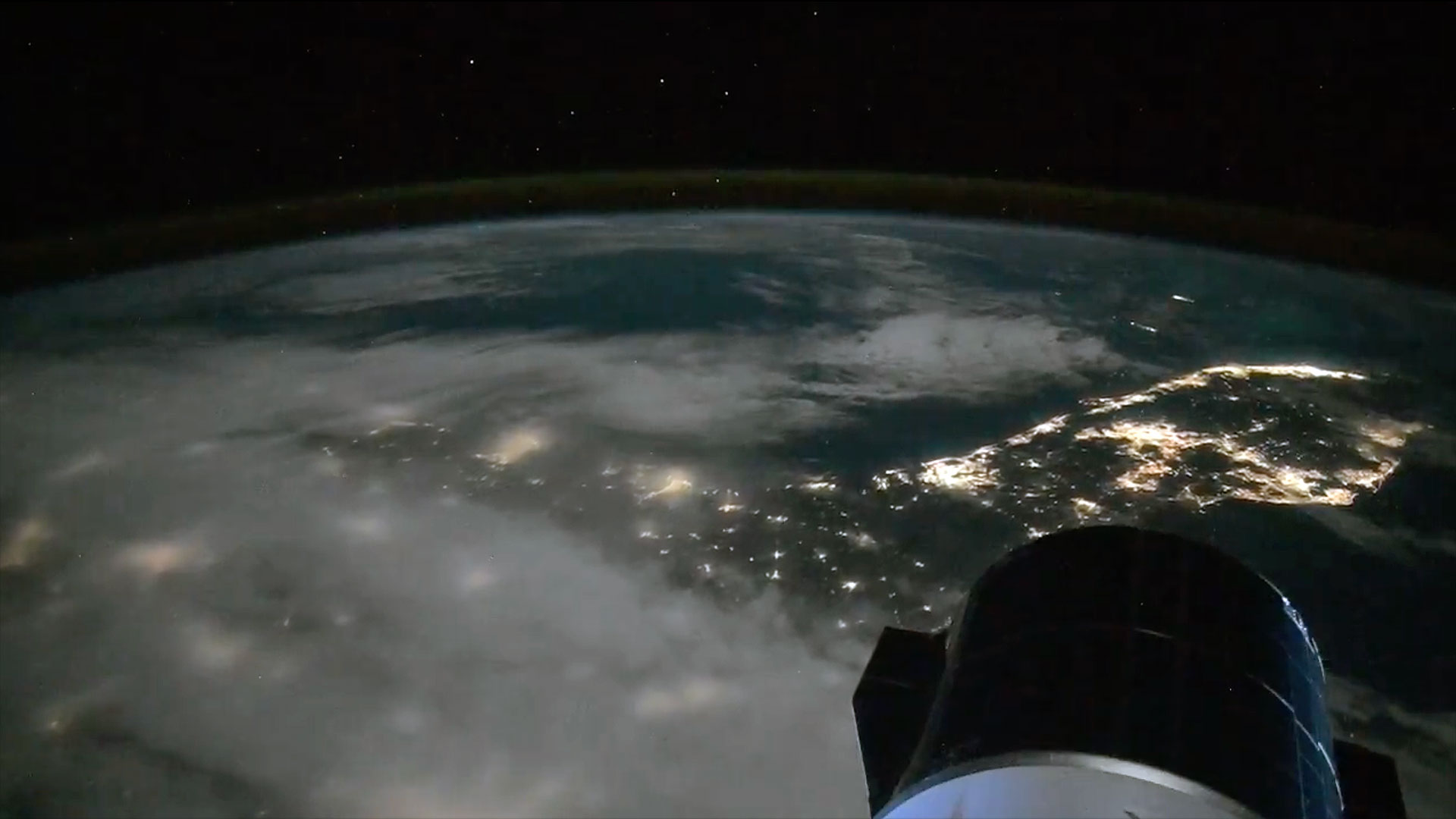SpaceX launches NASA's TRACERS mission to protect Earth from space weather (video)
TRACERS will watch magnetic field lines snapping and reconnecting as solar storms overwhelm them.
NASA's TRACERS mission blasted off from California's Vandenberg Space Force Base on Wednesday (July 23), after a 24-hour delay caused by airspace concerns.
TRACERS (Tandem Reconnection and Cusp Electrodynamics Reconnaissance Satellites) is composed of twin satellites that will study how surges in the solar wind trigger magnetic reconnection in Earth's magnetosphere; such reconnection leads to charged particles being funneled down the magnetic cusps over the poles, sparking auroral lights and geomagnetic storms.
By having two satellites in close proximity to one another, TRACERS will be able to see how areas of Earth's magnetic field that are undergoing reconnection — the snapping and recombining of field lines — change over short time frames. This reconnection happens as activity between the sun's solar wind (a continual stream of charged particles from our star) occasionally moves around denser patches stemming from coronal mass ejections. Meanwhile, Earth's magnetic field waxes and wanes during this process.

TRACERS launched atop a Falcon 9 rocket from Vandenberg on Wednesday at 2:13 p.m. EDT (1813 GMT; 11:13 a.m. local California time). SpaceX and NASA had originally targeted Tuesday (July 22) for the liftoff but called that attempt off due to worries about the airspace over the launch range.
The Falcon 9's first stage came back for a landing at Vandenberg just under eight minutes after liftoff as planned. It was the 16th mission for this particular booster, according to SpaceX.
The rocket's upper stage, meanwhile, continued hauling the TRACERS duo to low Earth orbit, targeting an altitude of 367 miles (590 kilometers).
TRACERS isn't flying alone. Also on board the Falcon 9 today are two private spacecraft, called LIDE and Skykraft 4, and three additional NASA-involved missions.
Breaking space news, the latest updates on rocket launches, skywatching events and more!
One of these ride-along NASA efforts is the Athena EPIC (Economical Payload Integration Cost) SmallSat, which will demonstrate a new way of more efficiently placing remote-sensing (or rather, Earth-observing) instruments into orbit.
Another NASA-related mission is the Polylingual Experimental Terminal, which is a new technology that will demonstrate how spacecraft can roam between communication networks in space, improving satellite connectivity.
Finally, a cubesat called the Relativistic Electron Atmospheric Loss (REAL) mission will explore how high-energy particles in Earth's Van Allen radiation belts are scattered into the atmosphere, with the aim of eventually mimicking this natural scattering to remove potentially harmful particles from getting in the way of satellites and damaging their circuitry.
All of these payloads — TRACERS and the ridealong satellites — are scheduled to be deployed during a 50-minute stretch beginning about 55 minutes after launch.
Editor's note: This story was updated at 2:15 p.m. ET on July 22 with the new launch date of July 23, then updated again at 2:35 p.m. ET on July 23 with news of successful launch and rocket landing.

Keith Cooper is a freelance science journalist and editor in the United Kingdom, and has a degree in physics and astrophysics from the University of Manchester. He's the author of "The Contact Paradox: Challenging Our Assumptions in the Search for Extraterrestrial Intelligence" (Bloomsbury Sigma, 2020) and has written articles on astronomy, space, physics and astrobiology for a multitude of magazines and websites.
You must confirm your public display name before commenting
Please logout and then login again, you will then be prompted to enter your display name.

